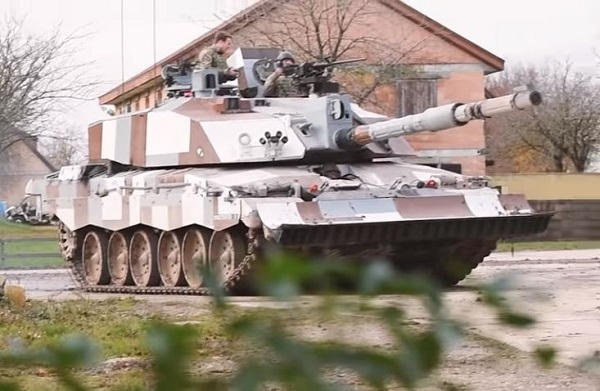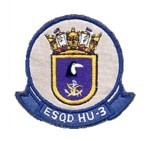British Army Strike: An Inside View
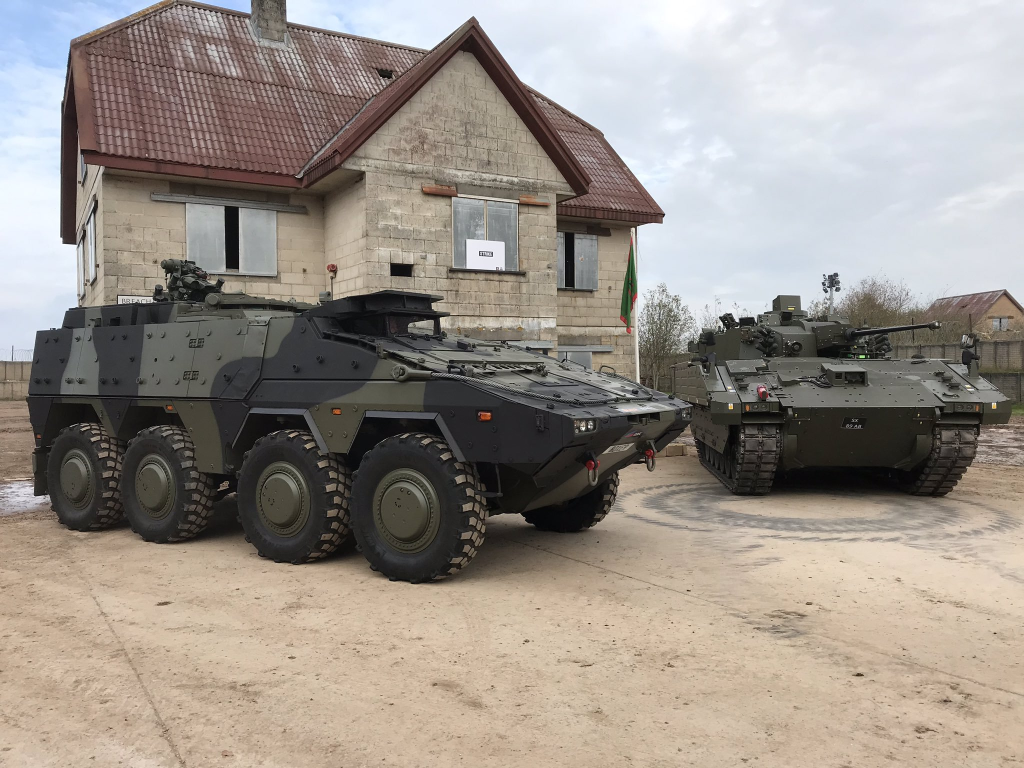 By “Strike Prophet”
By “Strike Prophet”
This article is written by an ex-British Army friend and colleague. He is someone who fully understands the Strike concept. The author has unmatched credibility in writing this piece. I am extremely grateful for his input and have no hesitation in recommending this as a definitive discussion of how the British Army might fight in future.
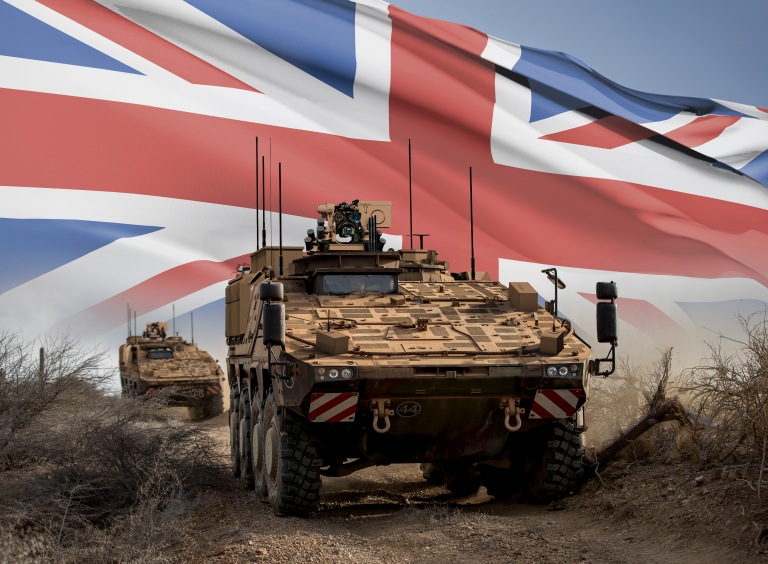 What is this Strike thing?
What is this Strike thing?
Despite the wealth of information made public by the British Army, and others, there continues to be much confusion about the Strike Brigade in terms of what it does and how it operates. Where possible, this article will use the information already provided by the British Army to clarify these issues. Time and space are limited, so what could easily be a book will have to be boiled down.
Explicitly one of the raisons d’être of the Strike Brigade was, at its inception, to “redefine how the British Army fights.[1]” Thus, the Brigade spans both an operational requirement and a force development concept predicated on that requirement. The applications start point for this journey was “enabling better divisional-level manoeuvre.”
What does this mean? In the simplest possible terms, it means giving a UK Division and/or Allied Corps a Screening and Exploitation Force.[2] This has been publicly stated by the Army. If you know what a screening and exploitation force does, then this will be well-trodden ground. For those of us who grew up in 1 BR Corps, the conduct of the “screening force battle” was something we all lived and died by – at least potentially. In its most basic form, the Corps Covering force was 2 x Formation Recce Regiments, but with Corps assets like Fires and Aviation attached. Note, these were attached and not organic.
How to Fight
Clearly the exam question for the Strike Brigade was how to fight and operate. Initial tactical doctrine had been written by October 2017, but the concept had been looked at in the context of Divisional CPXs from over a year previously. To aid its development, the Army formed the Strike Experimentation Group, commanded by a Colonel with Formation Reconnaissance background, which provided the essential function of aligning concepts with testing and experimentation.
When people pontificate that “strike cannot survive against a peer competitor,” they seem to do so from a standpoint which does not reflect an understanding of Formation-, Division- or Corps-level warfighting. So some people clearly think Strike is an alternative to an armoured infantry brigade, which given the announcement made in December 2016[3], that the Field Army would reorganise as two Strike Brigades and two Armoured Infantry Brigades is hard to understand, as the intended role of the Strike Brigades, if not immediately articulated, was obviously both different from and complimentary to, the Armoured Infantry Brigades. Even the most casual observer should have concluded that a Strike Brigade does not fight or operate like an Armoured Infantry Brigade and has a totally different mission. If 50% of the formation is reconnaissance vehicles, then logic would strongly suggest the role it currently has is far from being as “vague and unclear” as some suggest.
The Strike mission requires highly dispersed operations enabled by low signature, highly redundant C2 which can concentrate effects in both time and space in ways far more detrimental to the enemy’s scheme of manoeuvre than might otherwise be the case if conventional methods were used.
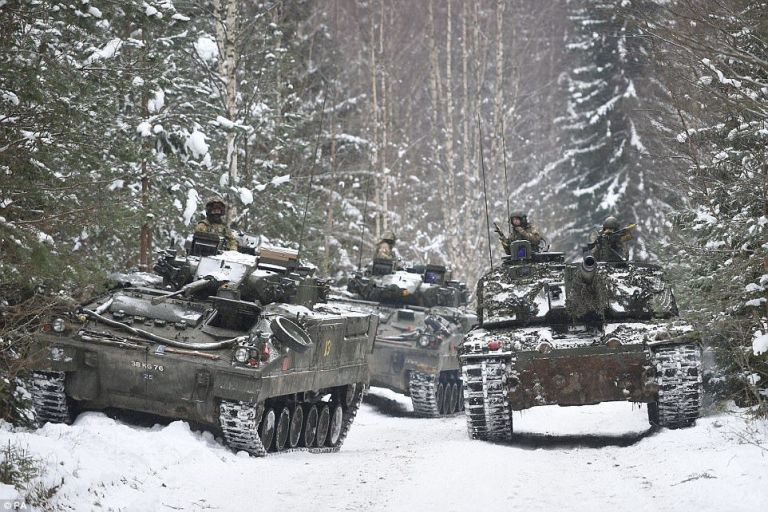 Strike Brigades will be used in addition to Armoured Infantry Brigades, not instead of them.While Boxer and Ajax are new vehicles, the Warrior IFV and Challenger 2 MBT will be upgraded to ensure they remain competitive. (Image: UK Ministry of Defence)
Strike Brigades will be used in addition to Armoured Infantry Brigades, not instead of them.While Boxer and Ajax are new vehicles, the Warrior IFV and Challenger 2 MBT will be upgraded to ensure they remain competitive. (Image: UK Ministry of Defence)
Strike is looking to add as much friction and uncertainty to the enemy formation as possible by enabling Fires, Aviation, Air and a whole range of joint effects to destroy, defeat, and inflict attrition on enemy formations within a Division’s or Corps’ battlespace. Ultimately, this allows Armoured Infantry Brigades and/or coalition armoured formations to conduct counterattacks and counter strokes under considerably better conditions than if Strike Brigades were not present.
Strike doesn’t aim to “win.” It helps others win at less cost.
All that said, the Strike Brigade concept is not problem-free. Strike as an idea started with just one platform, which was Ajax. This concept then allowed the British Army to buy Boxer. So, no Strike, no Boxer. Force development is an incremental and evidence-based process (or should be!). This process is constantly retarded and challenged by inter-service rivalry, cap badge politics and a lack of money, which then exacerbates the inter-service rivalry and the cap badge politics. What this means is that Strike, as an idea, is always going to be hostage to competing interests. What it also means is that lots of the equipment-based criticism and commentary on Strike are simply nugatory and ill-informed. For example, Strike doesn’t have to have organic fires to use fires, so arguing about which wheeled gun the Strike Brigade needs misses the point. It might or it might not. It doesn’t matter, and the best answers lie above that of the Strike concept in the wider evolution of Land and Joint Fires.
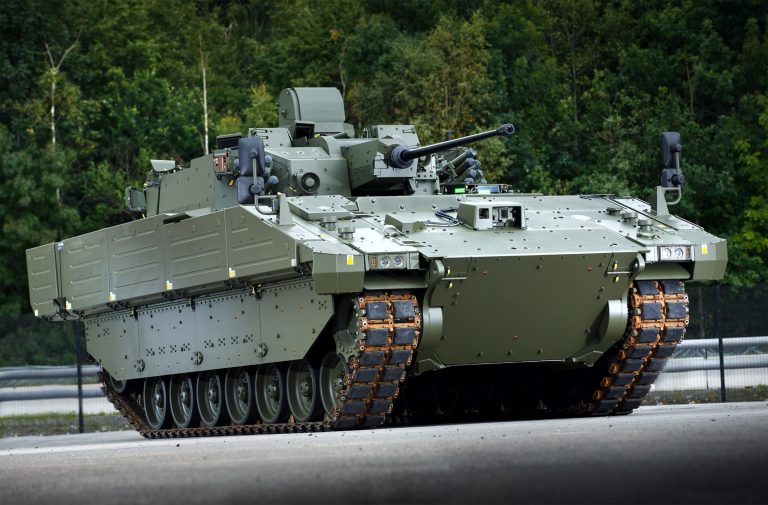 The Strike concept was originally built around Ajax. This vehicle will replace the CVR(T) family originally acquired in the mid-1970s. It was always anticipated that Ajax would perform a formation recce role. Strike is essentially a modern adaptation of this role, but adds an infantry component with Boxer. (Image: General Dynamics UK)
Risk
The Strike concept was originally built around Ajax. This vehicle will replace the CVR(T) family originally acquired in the mid-1970s. It was always anticipated that Ajax would perform a formation recce role. Strike is essentially a modern adaptation of this role, but adds an infantry component with Boxer. (Image: General Dynamics UK)
Risk
Strike is also hostage to a watering down of the concept, mainly because risk aversion is a real thing in modern life. Strike methods of operation require a certain level of boldness, skill and innovation. Redefining how the British Army fights is not for the faint-hearted and needs to be sold to the Army as a whole, and not just some part of it. The problems arise when the faint-hearted find excuses for something being too hard as opposed to too difficult. While Strike is, in theory, a very pretty baby, it could easily evolve into a very damaged adult because it is either abused or lacks good parents and, to stretch the analogy further, this is about educating the parents, and not about putting make-up on the baby!
This brings us to a key point about Strike, which again some seem not understand. Strike is not a platform-centric idea. Yes, Strike may have started with Ajax, but that was pure logic, based on the fact that covering forces were in the formation recce business, as in CVR(T) regiments. Ajax is the CVR(T) replacement. This means that criticism of Strike is based on shallow technical analysis of Ajax and Boxer. The most simplistic observations seem to focus on direct fire weapons and mobility.
High lethality is required, and any vehicle can increase its capacity to offend by adding a weapon, but that comes with large cost implications attached, and so the often heard comment that “Boxer needs a 30mm cannon” assumes the absolute need for such a weapon, or else Strike will be a “hollow force.” For Strike, what gives the 30mm weapon its real value is the sighting and detection system inherent to it. Thus, lots of people talk about the 40mm cannon on Ajax. Almost no one talks about the Thermal Imager, which is actually the key capability. The strike concept of operation clearly puts primacy on sensors and communications. To paraphrase Wavell: “Amateurs talk 30mm cannons. Professionals talk communications and sensors”.
As previously stated, lethality is clearly both important and required, but as the current Strike Brigade Commander has pointed out, what experience has shown is that for Strike to succeed it merely needs to be competitive with the enemy, as opposed to superior to the enemy. You just need to win the fight rather than the whole battle. Consequently, the plan has always been to resource Strike units with both mounted and dismounted ATGM and anti-armour weapons, which are obviously high pay-off in terms of cost versus effect/ flexibility.
The other odd claim is that “wheels and tracks don’t mix,” which is clearly a reference to Ajax being tracked, and Boxer being wheeled. Again, this can only be a lack of experience and/or understanding. For example, from the 1970s and 80’s the Bundeswehr had Divisional Reconnaissance Battalions which mixed Luchs wheeled recce vehicles with Leopard 1 tanks at the sub-unit level. Clearly, you can mix tracks and wheels, and people do. The French Army routinely mixes tracks and wheels at the unit level with Leclerc, VBCI and VBL. There are many more examples including Soviet divisional-level anti-tank battalions and combat reconnaissance patrols which routinely mixed tanks, tracked IFVs and armoured cars. Soviet wheeled BTR Regiments had organic tank battalions. Tracks versus wheels is largely a false dilemma which is supposedly about mobility, but is actually more about cost and sustainment.
Given its remit to “redefine how the British Army fights,” is Strike the future of the British Army? The answer is “yes,” not “it depends” or “too early to tell.” It simply is.
Why?
Firstly, because there aren’t any other options, and secondly, thirdly and fourthly, money! The force structure descended from Cold War armoured divisions or even the short live multi-role brigades, and now armoured infantry brigades might no longer be competitive for the cost.
In the eyes of some of the kit-junkies, an ideal UK Armoured Infantry brigade would have Leopard-2 MBTs, CV-90 MkIV and some wheeled 155mm. In essence, all you would have is a more expensive version of what was causing the problem in the first place and avoids asking the hard questions about how to evolve or transform. The question that will eventually have to be asked is what comes after the Armoured Infantry Brigades? How can they transform in line with cost and effect.[4]
Anyone saying “we need to get rid of Strike” is quite literally saying the British Army needs to get rid of the one coherent path to transformation that exists. As was spelt out early in the process, Strike experimentation outputs are good for the whole Field Army.
The model of 4-5 identical brigades comprising a traditional force arrangement of MBT, IFV and SPG, doesn’t offer policymakers the options they need and Army commanders what they need for warfighting. Worse, it draws any UK Division into fighting parallel battles of a predictable format, which in turn does not create the best conditions to employ divisional or corps-level enablers. Anyone familiar with this level of operations will know there is noticeable, albeit discrete body of literature dealing with this very subject going all the way back to before WW1.
Now all this can be basis for a really good discussion or even argument, but notice we are talking about methods of fighting and operation. We are not arguing about the kit and 30mm cannons. Agnostic of equipment we need to understand that two Strike Brigade and two or three “other brigades” do give a Divisional commander more options than 4 identical brigades. What those “other Brigades” may look like needs to be addressed.
Thus, the only test Strike Brigades have to pass is that of giving Divisional, Corps Commanders and policymakers more options than if they were not Strike Brigades, or rather not trained and resourced to operate as Strike Brigades. Strike places a real emphasis on high-quality training. Operating dispersed is not a pick-up game. For all the espoused value of the manoeuvrist approach to operations and mission command, the “Last safe moment” mindset is hard-gained, and it is absolutely no surprise that the current Strike Brigade has sought to nurture what they call “The Strike Ethos.” It is no surprise that Brigade “tag line” is: “The boldest measures are the safest.”
Not New
Now it is easy to overstate the novelty of what is proposed. As has been shown, the idea of a Strike Brigade is not new, but how it works is different today than how it did during the Cold War, and what it is being asked to do is actually far more demanding, barring the existential nature of the Cold War. The really obvious issue here is that of dispersion and understanding that dispersion is the thing from which all else flows. This isn’t something driven by fashion. Most NATO armies are a lot smaller than they were even 40 years ago, but the world is still the same size. This means that some of the old assumptions about warfighting at scale are less safe than previously supposed. This doesn’t mean anything seen in somewhere like Ukraine is showing us anything new. It is not. It is old lessons relearned in a different context, but fundamentals still apply.
What fundamentals? Fundamentals as in much about Strike is recognisable and comprehensible to former Brigade Commanders and senior officers who served in BAOR. Indeed, it is somewhat strange that unqualified people contest the validity of the Strike concept when officers who have actually commanded Brigades do not have any major issue with the idea it, even though some professional differences of opinions exist. This is the nature of experience. To give it more context than mere assertion, ask any former Formation or even Unit Commander from the 1980s if he could have fought 2 x CVR-T Regiments and 2 x FV-432 Regiments with an uplift of Milan ATGW as a Corps screening force? What about 2 x Saladin Regiments and 2 x Saracen Battalions? If you want to play tunes on that mix, then make it 2 x CVR-T Regiments and 2 x Saracen Battalions. It doesn’t really matter, and you can almost guarantee none of the officers concerned would be debating equipment. They’d be chewing on C2, groupings, battlespace, and logistics, not 30mm cannons, and wheels or tracks.
 In many ways, Strike is the modern equivalent of two Cold War CVR(T) regiments operating in conjunction with two armoured infantry battalions in FV432 APCs. The CVR(T) Spartan was the APC equivalent of the CVR(T) Scimitar and could have been used instead, but could not carry the same number of dismounts as the FV432.
Conclusion
In many ways, Strike is the modern equivalent of two Cold War CVR(T) regiments operating in conjunction with two armoured infantry battalions in FV432 APCs. The CVR(T) Spartan was the APC equivalent of the CVR(T) Scimitar and could have been used instead, but could not carry the same number of dismounts as the FV432.
Conclusion
Nothing about what has been written here should imply or suggest that it is not both useful and legitimate to criticise the Strike concept, but you have to do so from a position of understanding the Strike mission and how Strike intends to operate.
The Strike Concept, like any concept, is an idea. It’s not about a set of equipment. Ideas are unconstrained, but equipment costs money, and you will never get all that you want or even all that you need. You cannot separate the skill and knowledge to fight the force structure from an understanding of the kit you have to fight with or the training you need to get it all to work.
Strike isn’t about the Strike Brigade. Strike is about the whole Field Army because Strike only works if there is a capable Division to enable. Nor is Strike set in stone. It will develop over time and evolve in line with ideas and more importantly money, manpower and resources. Chances are, some of the best ideas might come from quite junior ranks within the Brigade, because it is they who are living with the practical expressions of high-level concepts. To finish back at the beginning, ‘Strike is about redefining how the British Army fights’, so there is lots of work to be done.
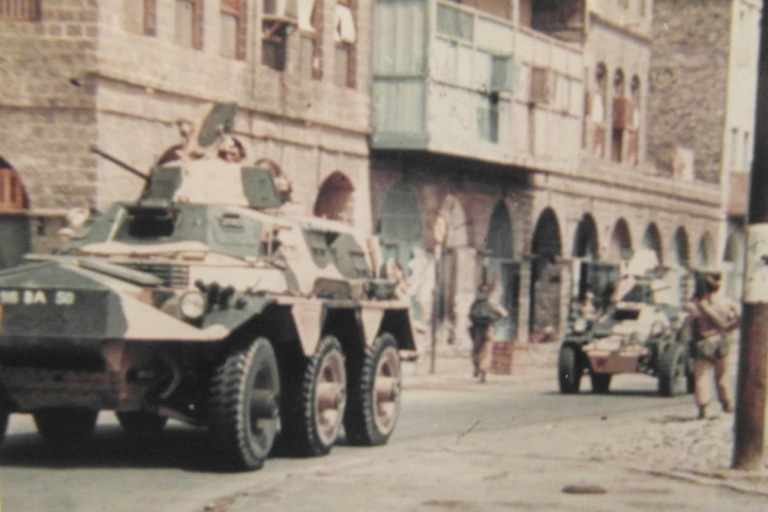 The ancestors of Strike: Saracen and Ferret in Aden, 1967. Though these vehicles could have performed a Strike-type role against peer adversaries, they were flexible enough to be used in other roles, e.g. counter-insurgency. Today, Strike Brigades will offer equal adaptability, but with platforms that provide greater lethality and survivability.
The ancestors of Strike: Saracen and Ferret in Aden, 1967. Though these vehicles could have performed a Strike-type role against peer adversaries, they were flexible enough to be used in other roles, e.g. counter-insurgency. Today, Strike Brigades will offer equal adaptability, but with platforms that provide greater lethality and survivability.
 https://uklandpower.com/2020/05/06/brit ... side-view/
https://uklandpower.com/2020/05/06/brit ... side-view/
